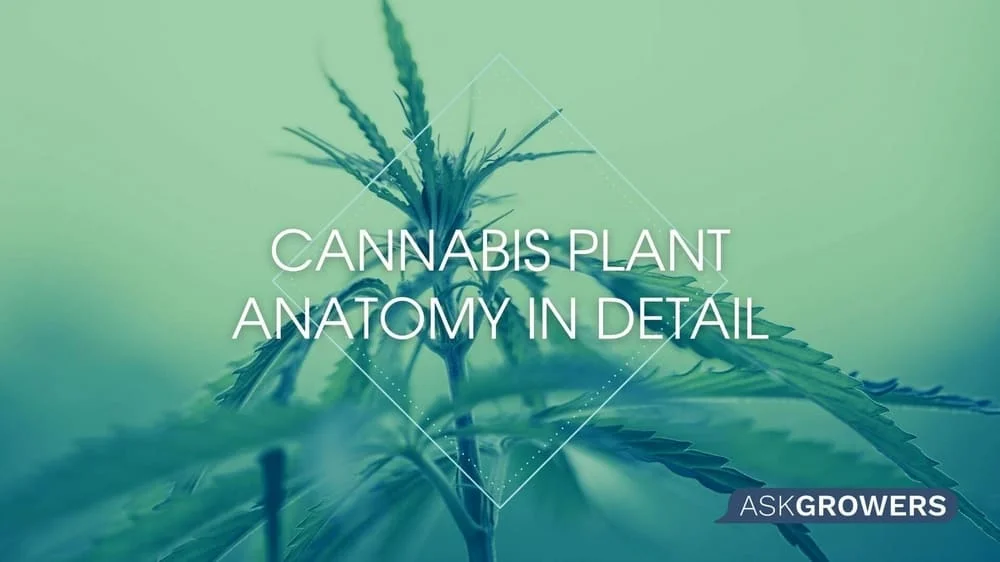Are you a fan of botanical science? If you’re planning to grow some weed for yourself, you have to know the ins and outs of the process. And one of the critical knowledge areas without which you can’t do is the anatomy of the cannabis plant. Knowing what components this plant has, how it develops and grows from a tiny seed, how it flowers, is the key to your growth success. So, let’s dive deep into the weed plant anatomy to understand how the process goes.
A Definition
Let’s begin with a real botanical definition of cannabis. Scientists distinguish three generic species of this plant: Cannabis sativa, indica, and ruderalis. However, some botanists believe that the generic strain is only one, which is Cannabis sativa, and indica together with ruderalis are its sub-types.
The cannabis plant is regarded as one of the most useful, appealing, and botanically interesting plants globally; its morphological features are impressive. It is pretty easy to grow without the use of pests, and humanity has conveniently used the plant’s parts in the production of fuel, fiber, medications, food, etc. In terms of its botanical appeal, the cannabis plant has fascinated scientists for centuries, yielding ornate and sophisticated flowers, or buds, that take numerous shapes and colors.

Anatomy of a Weed Plant: Major Parts
Here is the rich vocabulary of the cannabis plant’s anatomic parts. You’ll be amazed to discover how many elements it has and what significance is attributed to each of them, both in the growing process and manufacturing procedures.
Seeds are the plant’s primary construction material, without which no cannabis item will originate. They are formed by female plants and contain the genetic code of both male and female species. The primary precondition for the plant’s propagation is germination, which happens when the seeds are fertilized. A cannabis sprout emerges from a seed, which then transforms into the plant’s main root and anchors the plant in the soil, with further growth of the outer part of the plant.
The cannabis roots are the underground part of the plant that keeps it fixed and nourishes it by taking the water and nutrients from the soil. The cannabis plant’s main root is termed “taproot”; it’s the one that develops from the seed. Your plant will grow much better if you add mycorrhizae to the soil, thus improving the root system’s health.
The plant’s stem is the plant’s part that grows out of the root and goes upward, hosting all lateral branches and leaves of the plant. The stem’s health and thickness are the guarantees of your plant’s stability. It’s often reasonable to cut the stem to curb its growth upwards, focusing on the plant’s lateral expansion, with new branches forming to host more valuable buds.
Branches of a cannabis plant grow laterally out of the main stem. They are the sites for bud and leaf formation, and a skilled grower can shape the branches’ design to make their plant more productive.
Another vital element of a cannabis plant’s anatomy is the node, which is the point of branch’s growth out of the stem. Gender characteristics of plants are typically located on the nodes. If you need more clarity about your plant’s expected height, look at its internodal spacing: large spaces suggest that the plant will go high, and small spaces hint at a short plant.

Leaves of the cannabis plant come in two types: fan and sugar. Fan leaves, as the name suggests, are iconic-shaped leaves symbolizing marijuana. Yet, they have minimal practical value, only feeding the plant with sunlight. Sugar leaves, on the contrary, are small and heavily resin-coated, which makes them valuable in marijuana production.
An essential part of the plant is its flower, or bud. It’s precisely what you collect during harvesting and dry for further consumption. Sometimes you may find a cola, which is a bud cluster, which is also a valuable part for further drying and consumption. The value of buds is their intense resin coverage located on the trichome – a natural protection mechanism of the cannabis species that now serves as the main source of cannabinoids and relieving, psychoactive, and painkilling effects associated with marijuana use.
Understanding Gender in the Cannabis Anatomy
Knowing whether you have male or female plants is essential, as only female plants have seedless, unfertilized buds from which smokeable marijuana is produced. You can easily recognize a female weed plant by seeing white hairs at its pistils – the place where leaves connect to the plant’s stem. Now that you know that a female plant has white hair, you will have no trouble identifying the male one. As a rule, male weed plants also have small round sacks grouped in grapes and hanging from the plant’s stem.
The most exciting part about gender identification is that weed plants can also be hermaphrodites. These unique natural creatures have both male and female characteristics in a specific percentage (e.g., 50% male and 50% female or 90% male and 10% female). You can still have those plants fertilized; for instance, if your plant contains around 10% of male signs, you can remove those flowers safely, and the plant will still develop unfertilized buds further. If you use the hermaphrodite plant’s pollen, it will have feminized weed seeds.
Top Recommended Seeds for Growing
Conclusion
Now that you’re well-versed with the marijuana anatomy, you can grow some weed for yourself or improve what you’re already doing. Keep in mind that the choice for indoor versus outdoor planting, growing weed from seeds or clones, and knowledge of the growing cycle are also important aspects of the cannabis growing affair. Good luck!



